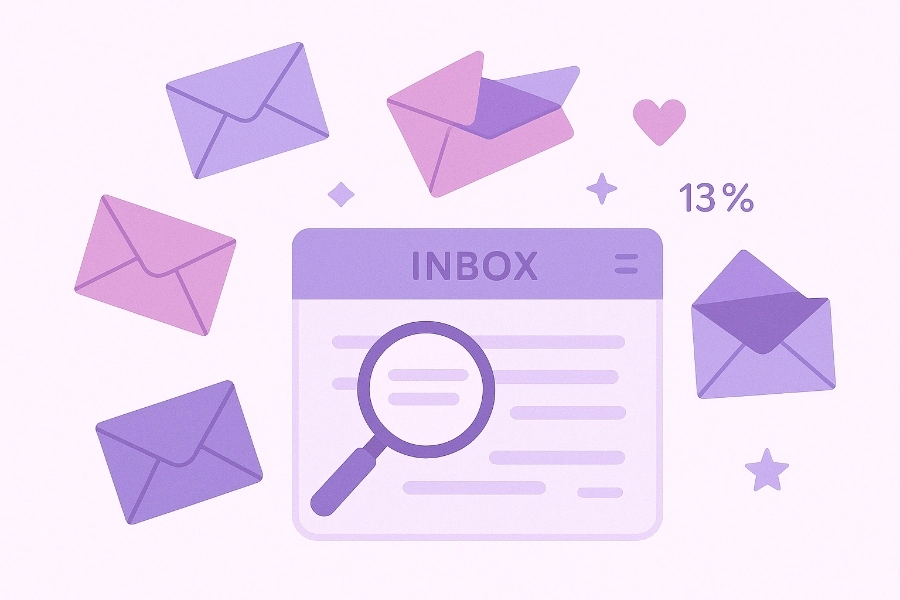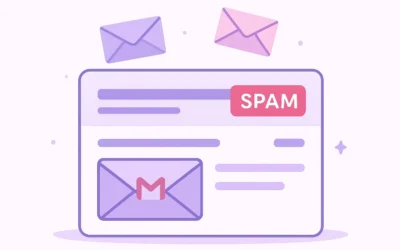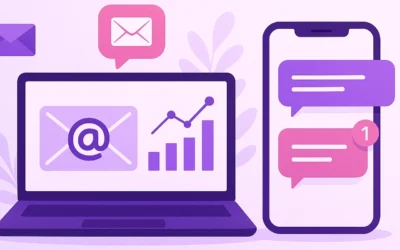Are you sending email campaigns but your contacts hardly open them? Don’t worry, you’re not alone. Improving the open rate in email marketing is one of the biggest challenges for any digital business.
In this article, we’ll see how you can increase this metric in a practical way, without resorting to empty tricks or techniques that damage your reputation. Only real, applicable, and effective strategies.
open rate email marketing
The open rate represents the percentage of people who open an email compared to the total number of recipients who received it. For example, if you send 1,000 emails and 200 people open them, your open rate is 20%.
This figure is key because it’s the first filter in your campaign. If no one opens your message, there will be no clicks, conversions, or sales. That’s why improving this metric is not optional: it’s essential for the performance of any email marketing strategy.
what is a good open rate in email marketing?
The truth is there’s no single answer. It all depends on the industry, the type of audience, and the campaign goal.
However, there are some generally accepted ranges:
- Between 15% and 25% is considered an acceptable open rate.
- Above 30% indicates a very well-optimized campaign.
- Below 10% is usually a sign of serious problems, both technical and strategic.
In B2B (Business-to-Business) environments, rates tend to be higher due to segmentation levels. In B2C, especially with large databases, it’s common for the rate to drop.
Common mistakes that hurt your email marketing strategy
Before applying techniques to improve, it’s important to detect what might be negatively affecting your performance. Here are some common mistakes:
- Generic or unclear subject lines: phrases like “Weekly Newsletter” or “Important News” don’t spark interest.
- Impersonal senders: using addresses like “noreply@…” reduces trust.
- Lack of segmentation: sending the same email to the entire database decreases relevance.
- Outdated lists: having inactive or invalid contacts affects your sender reputation.
- Poor timing: sending when your audience is not available can make you invisible.
10 effective strategies to improve email open rates
Now that you know the importance of open rates and the most common mistakes, let’s move on to the practical part. Below, I share a series of clear, direct, and effective strategies to significantly improve the performance of your email marketing campaigns. You don’t need to apply them all at once, but you should understand which ones best suit your business and start implementing them today.

Effective subject lines in email marketing
The email subject line is the first impression, and often the only chance you have to grab the reader’s attention. It must be clear, relevant, and spark curiosity. Numbers, questions, or words implying direct benefit work very well. Avoid unnecessary capitals or phrases that sound like spam.
Optimize the sender name and preheader
The sender name should convey trust. Ideally, a combination of your name and your brand.
The preheader (the text that appears next to the subject line) should complement the message and reinforce the decision to open the email.
Segment your contact list smartly
Not all your subscribers are the same. That’s why it’s essential to segment your sends based on interests, behavior, or funnel stage.
A well-segmented campaign usually has a much higher open rate.
If you don’t know where to start or need a professional strategy from scratch, you can rely on an email marketing service to help you structure and manage your campaigns effectively.
Send the email at the right time
Not all days or times work the same. Studies suggest that Tuesday and Thursday mornings usually have better open rates, but every audience is different. The best option is to run A/B tests with different times to find out when your audience is most active.
Email personalization
Personalization goes beyond including the recipient’s name. You can tailor content, offers, and even the tone of the message. However, avoid forced or artificial formulas. The goal is for the reader to feel that the email was written with them in mind, not automatically generated.
Use behavior-based automation
A good strategy is to trigger automated emails when the user performs certain actions: visiting a page, abandoning a cart, downloading a resource, etc. This allows you to send highly relevant emails at the right time.
Clean your list of inactive contacts
Sending emails to people who don’t interact affects your open rate and your sender reputation. Perform periodic cleanups to remove inactive subscribers. You can also send re-engagement campaigns before making this decision.
A/B test subject lines and timing
A/B testing is not optional. Test different versions of your subject lines, send times, sender names, or preheaders. Real data from your tests will tell you what works best with your audience.
Make sure you don’t land in spam
Ensure your domain is properly authenticated (SPF, DKIM, and DMARC configured). Also, check that your content doesn’t include sensitive words or broken links. If you want to improve your email content from an SEO and quality perspective, this article on SEO content strategies can help you write better texts.
Optimize content for mobile
The majority of opens happen on mobile devices. If your design isn’t responsive, you’ll lose many opportunities. Pay attention to spacing, text size, and touch buttons. User experience is key to maintaining high open and click rates.
Frequently asked questions about email open rates
How do I know if my emails are being opened?
Email platforms insert a small tracking pixel that activates when the email is loaded. However, it’s not 100% reliable, as some services block these measurements for privacy reasons.
How much does the subject line matter?
A lot. It’s one of the main factors that determines whether a user opens or ignores the email. Write subject lines that spark curiosity, relevance, or urgency.
Can open rate improvements be automated?
Yes. Some tools allow you to automate A/B tests, select the best times predictively, or even dynamically personalize subject lines.
What is the average open rate in email marketing?
It depends on the industry, but the global average is around 21%. Some data by industry:
- E-commerce: 15%–18%
- Services: 25%–30%
- Technology: 20%–25%
Why is my email provider showing very low open rates?
It could be due to several factors: spam filters, low sender reputation, unrefined lists, or technical errors. New privacy systems like Apple Mail also influence this.
How many emails should be sent per week without overwhelming subscribers?
A good frequency for most businesses is between 1 and 2 emails per week. If you provide a lot of value, you could send more. If you only sell, it’s better to moderate.
What’s the best time to send an email campaign?
In general, Tuesdays or Thursdays in the morning, between 9:00 and 11:00, tend to work best. Even so, the best option is to test with your own audience and measure results.
Conclusion: More opens, more results
The open rate is not just any metric: it’s the foundation of every email marketing campaign. If it’s not opened, it’s not read. And if it’s not read, it doesn’t convert.
Applying these strategies will help you noticeably improve results. The key is to test, adjust, and measure continuously.
___________________________
Have you tried any of these strategies in your campaigns? Do you have any personal technique that has worked for improving open rates?
I’d love to read your thoughts in the comments and continue the conversation. Your experience can help other professionals who are also optimizing their campaigns.



0 Comments